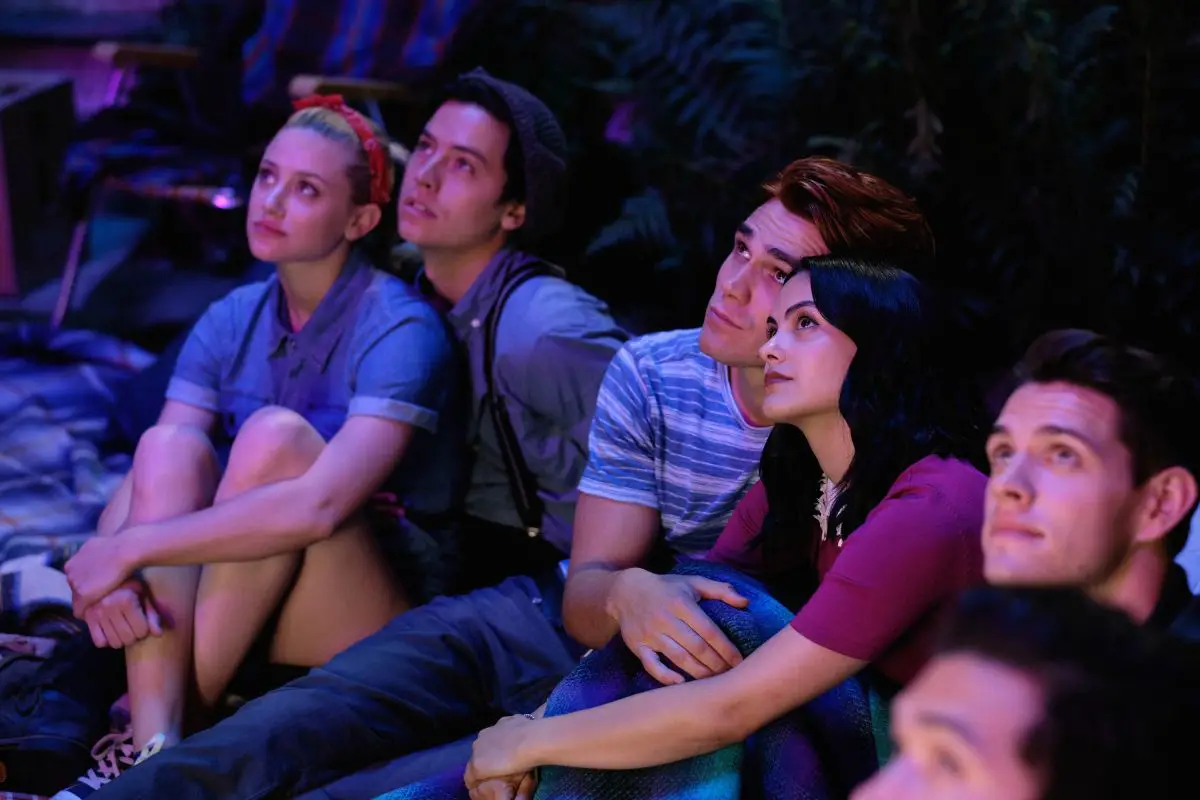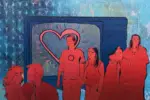Clear skin, flawless hair, stylish outfits, gym-touched bodies, perfect poise and confidence. Such descriptors invoke images of runway models, businessmen, lawyers, public speakers, personal trainers or any other number of well-established adults. Most people know from experience it takes years of acne, hormonal fluctuations and social incompetence to develop such physical, emotional, mental and social attributes. Finding a real-life high schooler who matches this description is extremely improbable — but you wouldn’t know that from watching popular television and movies. Age-appropriate actors are fleeting entities in an industry where time, budget and consistency are finite staples of currency.
Internet slang dubs the trend of casting adult actors for young roles as “Dawson Creeking,” in reference to teen drama “Dawson’s Creek,” whose cast, except for Michelle Williams, were at least four years older than the age of their characters. Meredith Monroe, aged 28 years on the 1998 pilot episode, somehow even landed the role of 16-year-old Andie McPhee. The age gaps of “Dawson’s Creek,” however, are mild compared to shows today.
Ironically, one of the worst offenders on current television is the “Dawson’s Creek” inspired CW show, “Riverdale.” The average age gap between the adult actors and their character was 8.2 years, meaning actors in their 20s and even 30s are being passed off to audiences as high school sophomores.
“Pretty Little Liars” makes sure to add the glamour of womanhood to Rosewood High School’s mysterious disappearances and death threats. How do producers manage to transform gangly, terrified teens into attractive, desirable protagonists? Casting dolled-up 20, 21, 23 and 24-year-olds to play high school juniors seems to do the trick. A notable exception is actress Sasha Pieterse who was a mere preteen on the show’s pilot. Through makeup and wardrobe magic, 12-year-old Pieterse perfectly fit playing a high school junior alongside her adult co-stars. With a touch of glam and pomp it seems no rules apply to casting — or rather, not casting — age appropriate actors.
American comedian W.C. Fields famously advised one ought to “never work with children or animals,” and the entertainment industry appears to still be taking his advice, at least regarding children. Child labor laws vary by state, with 17 having no laws regarding working minors, but America’s entertainment capital is very detailed in its regulations. Even if a minor is emancipated, California requires they receive the same accommodations as minors when on set.
Producers must adhere to each state’s, or country’s, specific labor laws — which becomes burdensome when filming in multiple locations. Generally, minors are only able to work for 12 hours a day between 5:00 a.m. and 10:00 p.m. on schooldays, require an hour of recreational time on set, must have a parent or guardian present and must have a studio teacher. The studio teacher both provides for a child’s educational needs during filming and holds responsibility for the child’s welfare and safety.
Minors working on set of a film with adult content poses another tricky situation for directors as they must create a believable plot while shielding the child from inappropriate content. Iconic Brat Pack teen Molly Ringwald recently reflected on her own apprehension as a minor portraying adult situations in the films of director John Hughes.
Legal restrictions, on-set censorship and lack of real-life experience and maturity are significant factors pushing casting directors away from age-appropriate actors and toward “aged-down” adult actors. Casting adults also eliminates any potential backlash for child exploitation. The sexual situations, some involving rape and assault, of “Dawson’s Creek” and “Gossip Girl” occur among teenage characters, and real-life teens may have lived through similar experiences. But subjecting child actors to such scenarios is seen as unnecessarily exploitative. Child welfare organizations even threatened to take custody away from the mother of then 12-year-old Brooke Shields after her appearance as a sex-trafficked child in “Pretty Baby.”
Using adults allows directors to sexualize fictional teenage characters without simultaneously sexualizing real-life teenage actors — refraining from age-appropriate casting, it seems, is an often-sought loophole for writing more explicit sexual content.
On the live stage, casting adults as children is not uncommon either. “Harry Potter and The Cursed Child” includes a cast of 22 to 36-year-olds playing 11 to 15-year-olds. While Aaron Sorkin’s adaptation of “To Kill A Mockingbird” sports 41-year-old Celia Keenan-Bolger and 32-year-old Gideon Glick portraying Scout Finch and Dill Harris, respectively, both of whom are under 10 years old. Directors may avoid young actors as they are often unable to take command of a stage and captivate a live audience as well as experienced adults. In the case of “The Cursed Child,” however, producers thought it would be unhealthy to expect a young child to perform a rigorous show eight times a week.
If directors and producers are able to create a better-quality piece of entertainment with less hassle and financial burden, while protecting the integrity of young actors, is a lack of age-appropriate casting really an issue? According to clinical psychologist Dr. Barbara Greenberg, widespread casting of adult actors as children distorts the self-perception of younger audiences.
“[Casting older actors] can give the message that [teenagers] are supposed to look good all the time,” she told Teen Vogue. “A person in their 20s is more likely to have a consistent appearance, whereas an adolescent may change more frequently. Some days they’re thinner, they’re a little heavier, they have pimples, their hair is a little frizzy. It’s all ok.”
During filming for “Lady Bird,” then 22-year-old Saoirse Ronan suffered from an acne breakout. Instead of covering up the blemishes in preparation to play high-schooler Lady Bird McPherson, Ronan let them show. Writer-director Greta Gerwig reportedly felt tired of films inauthentically portraying teenagers with “perfect skin and perfect hair, even if they’re supposed to be awkward.”
Hollywood’s incessant desire to create an artificial world of beauty seriously implicated both the perception of teenagers, both of themselves and by adults. “In a culture as shaped by media imagery as ours,” writes Christina Cauterucci of Slate, “the systemic misrepresentation of an entire age group has real consequences for how adults conceive of typical adolescence, and how teens measure themselves against it.”
Beth Daniels, a developmental psychology professor at the University of Colorado, told Slate that age gaps are less problematic when adult actors can believably pass for their teen roles, such as Alexis Bledel in “Gilmore Girls.” But contemporary entertainment (think shows like “Gossip Girl”) cast actors who do not remotely resemble a typical teenage physique. Not only are physical body standards skewed, but teenage characters are written as voraciously active in their sexual lives. But only 41.2% of actual American high school students report having sex, while only 11.5% have had four or more partners. Nothing even close to the sex-instigated high school drama rampant on “Degrassi.”
Combining physically well-endowed adult actors with sexually hyperactive teenage characters contributes to the culture of sexualizing real-life teenagers. Cauterucci notes Roman Polanski’s guilty plea to unlawful sex with a 13-year-old girl was qualified by both Polanski’s probationary officer and the case’s judge. Each asserted that the girl looked physically mature, as though to imply Polanski could not genuinely be faulted for assuming the child was of age.
Active avoidance of age-appropriate casting also warps audience’s understanding of the aging process, especially among women. “Viewers never really know what an older woman, say 50 or 60 or 70, should realistically look like,” Myrna Hant, a UCLA researcher, tells Teen Vogue. “This precludes women from having any positive role models for aging.”
When teenagers look like 20 to 30-year-olds, what do 20 to 30-year-olds look like? Apparently, they look like parents, parents to those very adult-appearing teenagers. Rebecca Feasey, a professor at Bath Spa University in the U.K. notes that the age gap between on-screen parents and their children is “biologically unrealistic and potentially implausible.” One example from a quintessential “cool-girls-rule-the-school” movie, “Mean Girls” expects audiences to accept that Amy Poehler, 32, could possibly be the mother of Regina George, played by 25-year-old Rachel McAdams.
This skewed cycle lends credit to Hant’s point that audiences rarely glimpse a genuine aging process. Teenage characters look like photoshopped models in early adulthood, while characters supposedly well along into aging and parenthood are played by actors in their 30s — the age when most people are just starting to have children. Slate’s observation into age-appropriate casting and the entertainment industry’s treatment of age is specific to women, though its premise is certainly applicable across gender lines:
“For women in Hollywood,” Cauterucci writes, “once adolescence is over, menopause is just spitting distance away.”















